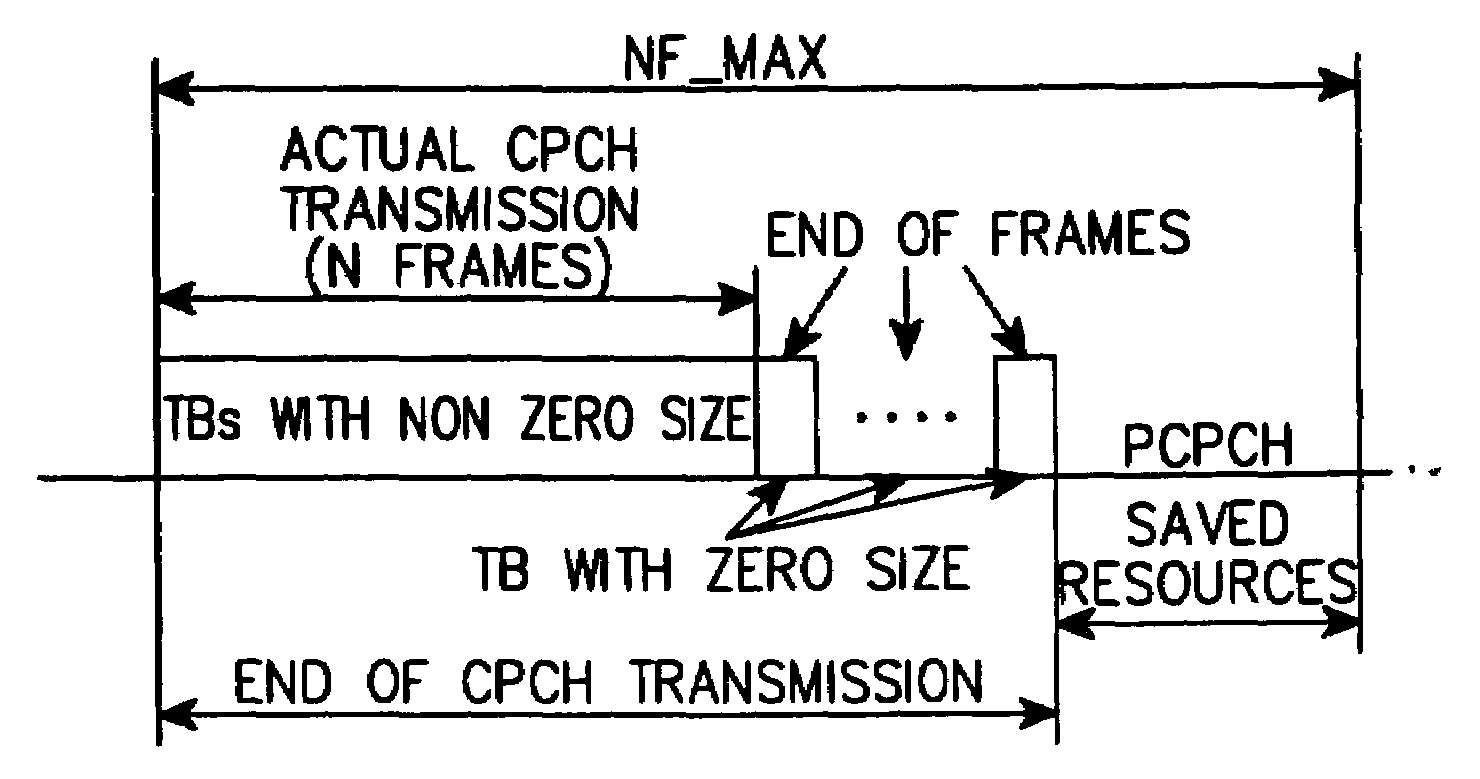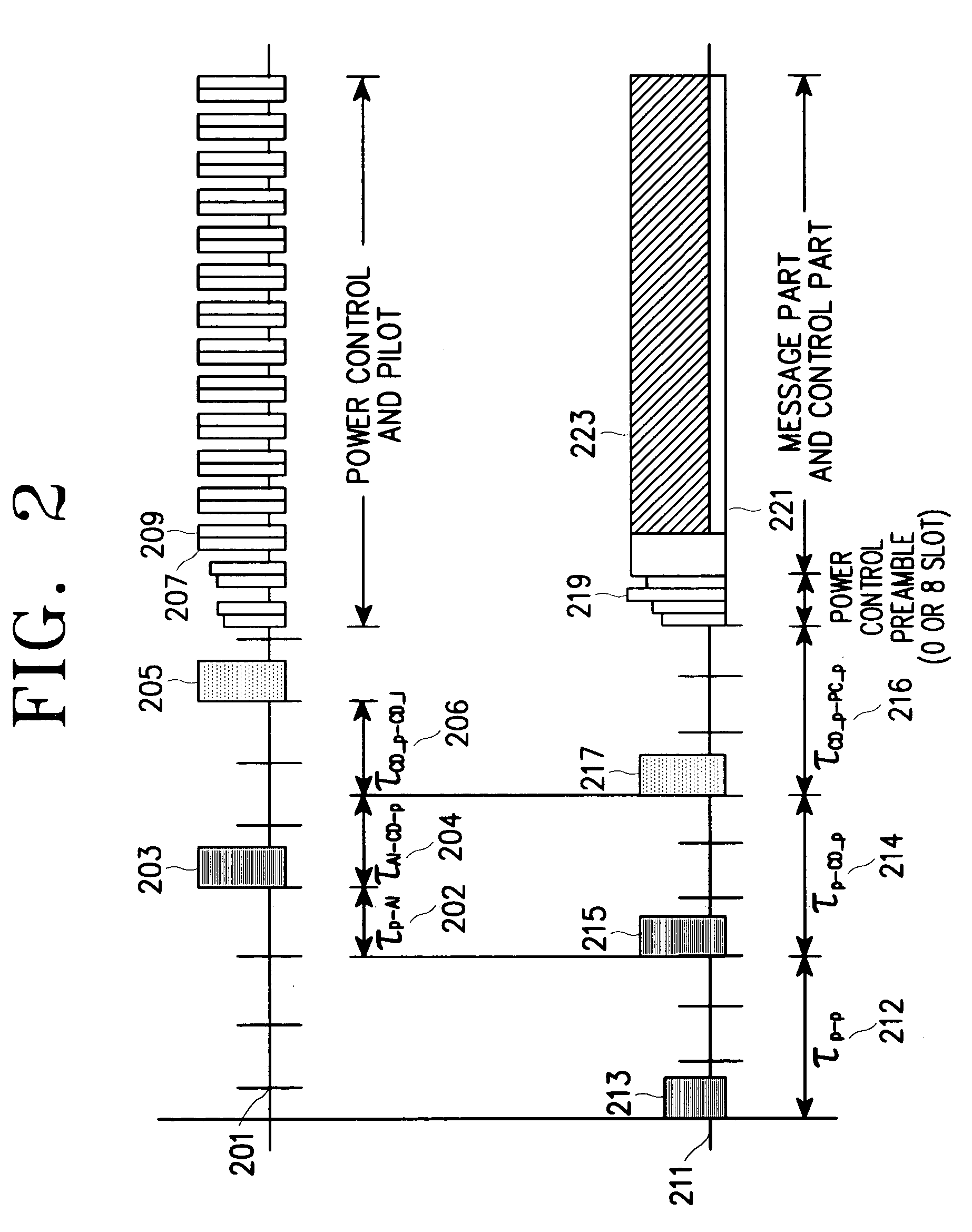Apparatus and method for assigning a common packet channel in a CDMA communication system
a communication system and common channel technology, applied in power management, orthogonal multiplex, high-level techniques, etc., can solve the problems of long transmission time, inability to receive data, and difficulty in transmitting packet data, so as to improve reliability, efficient management of uplink scrambling codes, and increase reliability
- Summary
- Abstract
- Description
- Claims
- Application Information
AI Technical Summary
Benefits of technology
Problems solved by technology
Method used
Image
Examples
first embodiment
[0152]In a first embodiment of the method for transmitting the two kinds of information at the same time, some of the slots constituting one frame of the CSICH are used to transmit the maximum data rate information and the remaining slots are used to transmit the use-status information of the PCPCH. One frame of the CSICH used in the present asynchronous standard may have the same length as one access frame. The frame length is 20 ms and includes 15 access slots. As an example of this method, it is assumed that the number of the information bits needed to transmit the maximum data rate used in the UTRAN is 3 and the number of the PCPCHs used in the UTRAN is 40. In this case, the UTRAN can use 3 of the 15 slots constituting one CSICH frame in transmitting the maximum data rate information, and use the remaining 12 slots in transmitting the PCPCH use-status information. That is, the UTRAN can transmit 24-bit maximum data rate information and 96-bit PCPCH use-status information over on...
second embodiment
[0155]In a second embodiment of the method for transmitting the two kinds of information at the same time, the 8 CSICH information bits transmitted in one access slot are divided so as to use several information bits in indicating the maximum data rate and the remaining information bits in indicating the PCPCH use-status information.
[0156]For example, when the same bit is transmitted through the I channel and the Q channel, the first 2 bits of one access slot can be used to transmit the information on the maximum data rate available for the PCPCH of the UTRAN, and the remaining 6 bits can be used to transmit the use-status information of the PCPCHs of the UTRAN. Therefore, 1 bit of the maximum data rate information is transmitted through one access slot and 3 bits of the PCPCH use-status information are transmitted through one access slot.
[0157]However, when the different bits are transmitted through the I channel and the Q channel, it is possible to transmit the maximum data rate i...
third embodiment
[0160]In a third embodiment of the method for transmitting the two kinds of information at the same time, the information on the maximum data rate available for the PCPCH and the PCPCH use-status information are transmitted through a plurality of CSICHs which may be simultaneously transmitted. For example, the maximum data rate information is transmitted through any one of the CSICHs and the PCPCH use-status information is transmitted through the other CSICHs. As one example, the transmitted CSICHs may be distinguished with the downlink channelization codes or the uplink channelization codes. As another example, it is also possible to transmit 40 CSICH information bits within one access slot by allocating a separate channelization code to one CSICH. If a separate channelization code is allocated to one CSICH as stated above, it is possible to transmit the maximum data rate information of the PCPCH together with the PCPCH use-status information within one access slot.
[0161]In the for...
PUM
 Login to View More
Login to View More Abstract
Description
Claims
Application Information
 Login to View More
Login to View More - R&D
- Intellectual Property
- Life Sciences
- Materials
- Tech Scout
- Unparalleled Data Quality
- Higher Quality Content
- 60% Fewer Hallucinations
Browse by: Latest US Patents, China's latest patents, Technical Efficacy Thesaurus, Application Domain, Technology Topic, Popular Technical Reports.
© 2025 PatSnap. All rights reserved.Legal|Privacy policy|Modern Slavery Act Transparency Statement|Sitemap|About US| Contact US: help@patsnap.com



